How to make an external filter for an aquarium with your own hands?
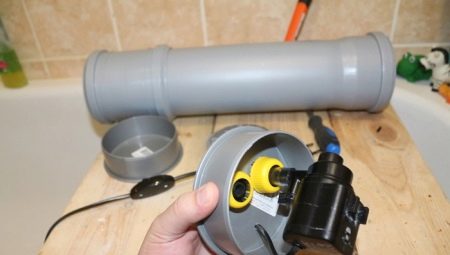
Any aquarist, even a beginner, knows about the need to filter the water in an aquarium. Constant cleaning of fish waste products will allow the owner to devote less time to cleaning in the home pond. How to make an external aquarium filter with your own hands, we will analyze in this article.
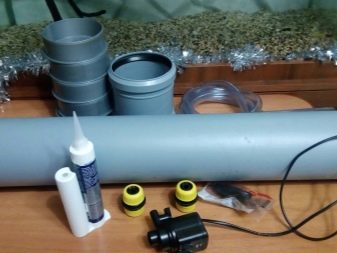
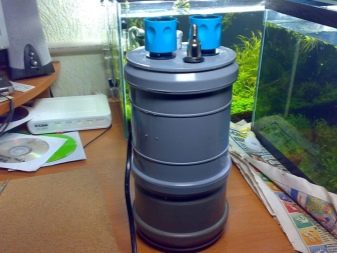
Description
The aquarium filter is a very important component of the entire biosystem of the aquarium, since in the pores of the filter element (whether it be a sponge or a free-flowing filler) settles and lives a large number of bacteria useful for the inhabitants of the "reservoir".
There are two types of aquarium water filters: internal and external.
The choice of a specific device must be made based on the volume of water in the aquarium, always with a margin (for an aquarium of 300 liters, you will need a filter from 350 liters, for 100 liters - 150 liters).
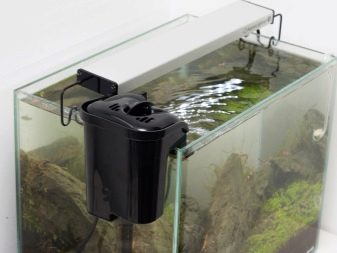
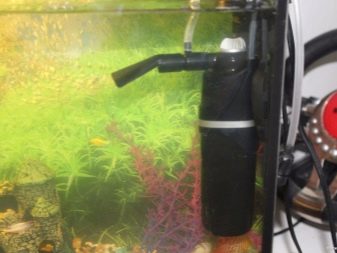
Internal filters are affordable, but they take up a lot of space in the aquarium and do not always look aesthetically pleasing, and if the aquarium is long, then 2 devices will be needed at all, which will be installed on both sides, thus hiding a lot of space. At the same time, no less efficient external instances with the required set of functions are very expensive, although they have a number of advantages over their internal "brothers":
- do not spoil the view in the "reservoir" with their bulky structure;
- designed for more impressive volumes;
- are maximally convenient to use;
- they require a little less cleaning and maintenance.
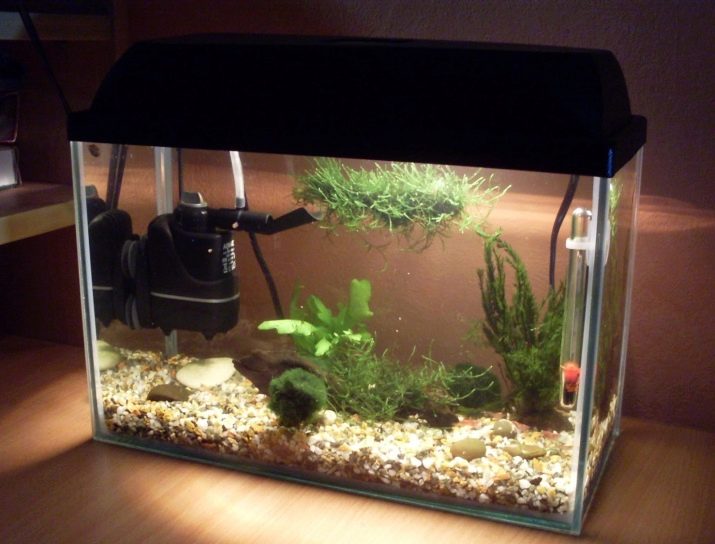
Filler options
The aquarium filter filler is an important ingredient. There are several options for sorbents.
Foam sponges are considered the most common.... They have a specific structure that allows the filler to be saturated with dirt less often. The synthetic winterizer in this case is inferior to the sponges. In addition to mechanical filtration, foam rubber is also responsible for the biological purification of water in the fish habitat. Many beneficial bacteria settle in the sponge, which neutralize nitrates and nitrites by their vital activity.
Sponges are found in different types of filters. Often aquarists make their own devices using these “dirt absorbers”. The sponge can be used for both external and internal filters.

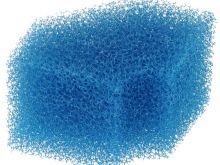
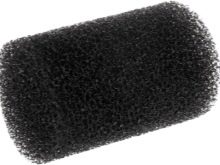
The long-term presence of such a sorbent in water is well reflected in the biosphere of the liquid. However, the sponge can still be clogged, then the water flow through the filter will be reduced. This will definitely affect the quality of the water. Therefore, at least once a week, the cleaning unit will need to be taken out and washed.
Aquarists with years of experience sometimes turn to ceramic fillings. Such parts are responsible for biological water purification. They have a porous structure, due to which there is the possibility of multiplying a large number of colonies of beneficial bacteria that take part in the nitrogen cycle in the aquarium.
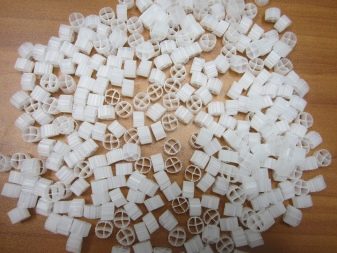
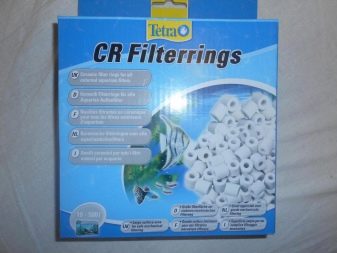
Such sorbents should not be squeamish for novice aquarists, since ceramics is a wonderful "tool" designed to establish biological balance in a dwelling for fish.
This type of filler does not need to be washed - you can only rinse it occasionally in the aquarium water. Most often, ceramic elements are used in devices for external filter models.
Today, on the shelves of pet stores, customers can see many different fillers of all kinds. Ceramic products from Tetra are in great demand. They have been relevant for many years. They are used in both freshwater and reef aquariums. Quite good analogues of Tetra fillers are products of the Hydor brand.
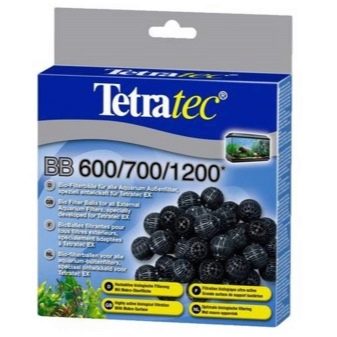
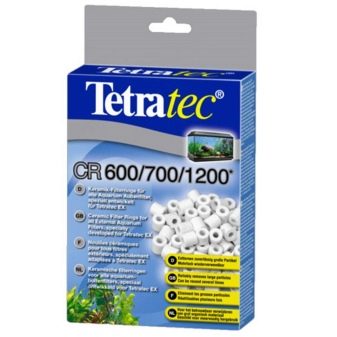
In order to mechanically improve the quality of water, they resort to installing a synthetic winterizer filler in the device. "Vata" is distinguished by its high density, therefore it is capable of absorbing even microscopic particles of lime.
If there is a padding polyester filler in the filtering system, then after thorough cleaning of the aquarium, such material is able to catch almost all the dust and dregs that rise up after the soil siphon or the treatment of aquarium plants.
The synthetic winterizer filler has one important drawback - it clogs up very quickly.... After a week of work, such material sticks together, turning into a dirty lump. All absorbent properties are then inevitably lost. There will be no sense from the filler. It will be possible to use this kind of filler again, but only after scrupulous rinsing under running water.

Due to such a short operational period, it is recommended to contact the sintepon filling of the filter only in emergency cases, when it is necessary to get rid of a large percentage of mechanical suspension.
Suitable for filtering aquariums and material such as zeolite (ion exchange resin). It is responsible for the cleaning of a chemical type and can absorb various chemicals into the structure, as well as exchange cations. If you use this material in filters, then remember that it can lower the pH in the aquarium and also lower the phosphate level. The best zeolite is considered to be the products manufactured by Hydor.
Many aquarists choose volcanic lava or expanded clay balls as filling. These sorbents can contain silicates, phosphates and even heavy metals. They must be rinsed well before using in an aquarium.
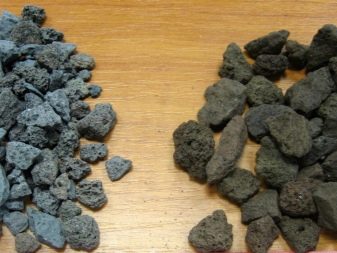
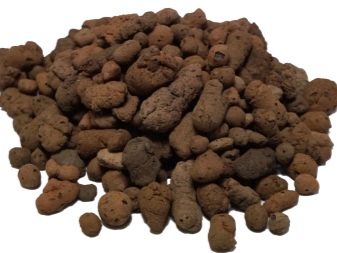
Clogging of such fillers is very slow, but during the rinsing process they often produce a very strong haze.
Activated carbon is also used. This filler is capable of removing a wide variety of compounds from the aquarium water. However, it cannot be called a biological material for filtration, because it absorbs both soluble and insoluble substances. Usually, coal is not used permanently due to its short service life. In external models of filters, activated carbon, as a rule, is used in conjunction with other types of fillers when the water is very cloudy or it is necessary to intensively filter the liquid for the treatment of fish.
It is not possible to name the specific service life of such a sorbent, since it directly depends on the installed filtering system and the tasks assigned to it.
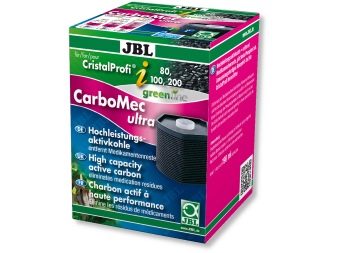
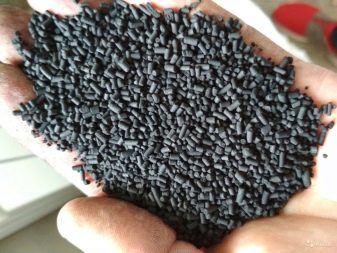
Usually, within 2 weeks of coal operation, the water has time to be quite well cleaned.
Separately, it is worth talking about peat fillers. Peat has been used in an aquarium for many years, but only in isolated cases as a filtering component. Such a sorbent enriches water with tannins and humic acids. It is to such a filler that you should turn to if you need to achieve the optimal level of water softness for fish and plants of certain species.
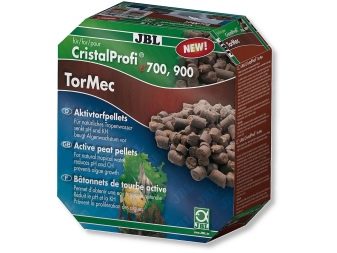
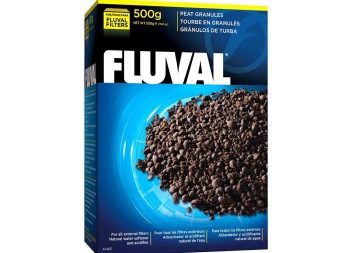
How to make?
The external filter is easy to manufacture - you just need to adhere to a certain sequence of actions.
- At the bottom of the container, you need to make a hole for water to enter the filter, at the top (cover) - two: for water and for the pump wire. With the help of the union, we firmly fix the pump on the inside of the lid.
- Thoroughly coat all joints with a sealant.
- We make separators for filter materials. To do this, cut out an element of a slightly smaller diameter than the container itself from the plastic box. We pour in the filler, separating it. The larger the volume of each cassette, the better the filtration. The combination of fillers will result in higher performance and better outlet water quality.
- Next, you need to assemble. The sealant must dry for at least a day. Once dry, install the filter in your work area and start measuring the hoses. This should be done as accurately as possible. The longer the hoses, the more powerful the pump must be installed.
- After that, a test run of the filter is carried out, the device should work for at least a day. If, after this time, no leaks are detected, then such an aquarium unit is completely ready for operation.
A homemade filter can be of any design and any appearance.
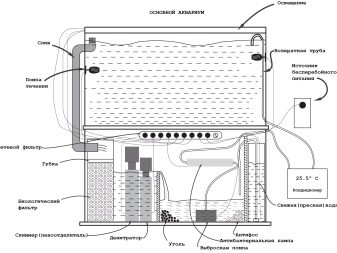

The assembly diagram is always approximately the same (container, hoses, pump, filter elements).
Before choosing a device design, you need to understand that there is no one universal filter for all aquariums and occasions. Each of them is made for specific purposes, tasks, volumes and types of fish contained in a given aquarium. That's why, before settling on a particular filter model, you need to take into account the characteristics of your pets.
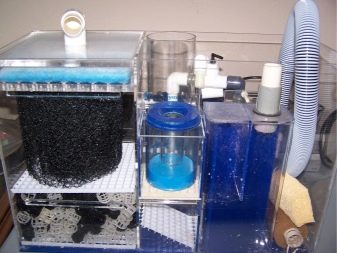
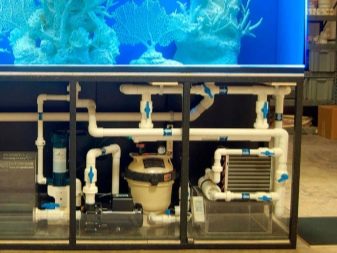
Care advice
Many newcomers to the aquarium hobby do not know how to properly clean an aquarium filter. As mentioned earlier, large colonies of beneficial bacteria live on sponges and other filter elements. When the sponge gets dirty, it naturally needs to be rinsed.
The sponge is taken out of the aquarium and carried to the sink. This is where the most common mistake appears - rinsing the sponge under running water, all bacteria so necessary for the life of the aquarium are washed off from it, after which the clean, but empty sponge returns to the reservoir.
In order to preserve bacteria and wash the sponge correctly, you need to perform a simple procedure: take a basin or bucket, pour some water from the aquarium into it and rinse the sponge in this water.

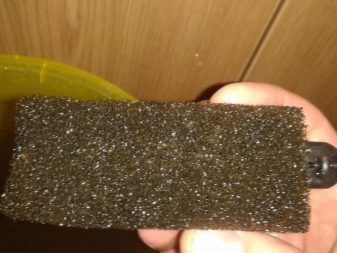
This will wash away the dirt, but all microorganisms will remain in place, and the "living" sponge will return to the aquarium.This flushing method is relevant for all types of filter elements, be it a simple sponge or baked glass balls.
Useful Tips
For the convenience of working with a homemade filter, transparent food-grade silicone hoses are well suited. They do not become hard over time, do not contain harmful substances, and the transparent material will help to see the deposits inside the tubes, which will prompt you to clean the filler.
Please note that it is undesirable to maintain the aquarium or perform any manipulations with it while your electrical appliances in the water are turned on (filter, heater).

Any type of work must be carried out in a completely de-energized reservoir.
If you are afraid of making serious mistakes when making your own filter for an aquarium, do not waste your time - buy a ready-made model, of which there are a lot on sale. It is advisable to give preference to high quality filters from well-known companies.
How to make an external filter, see below.








